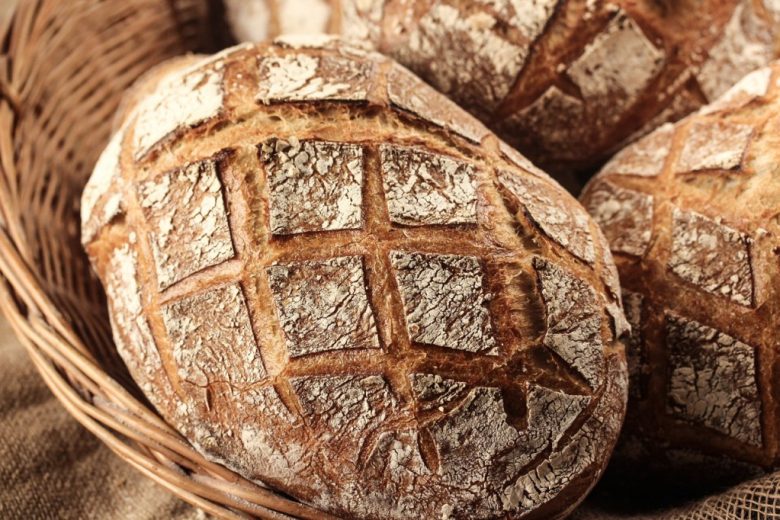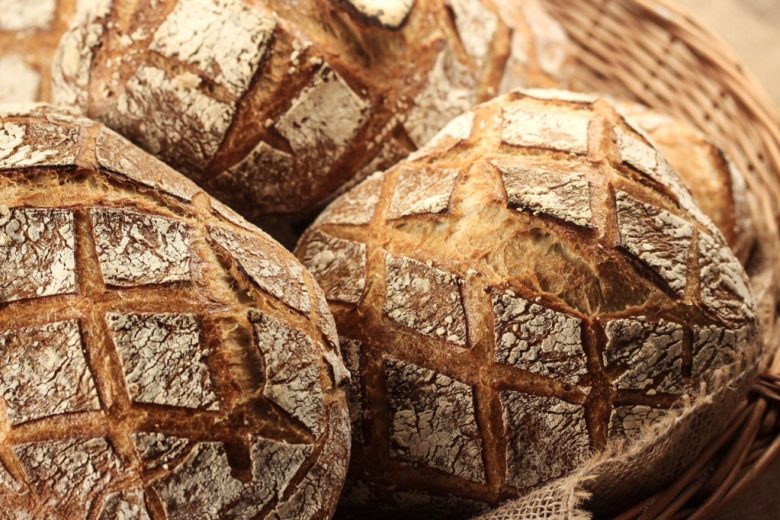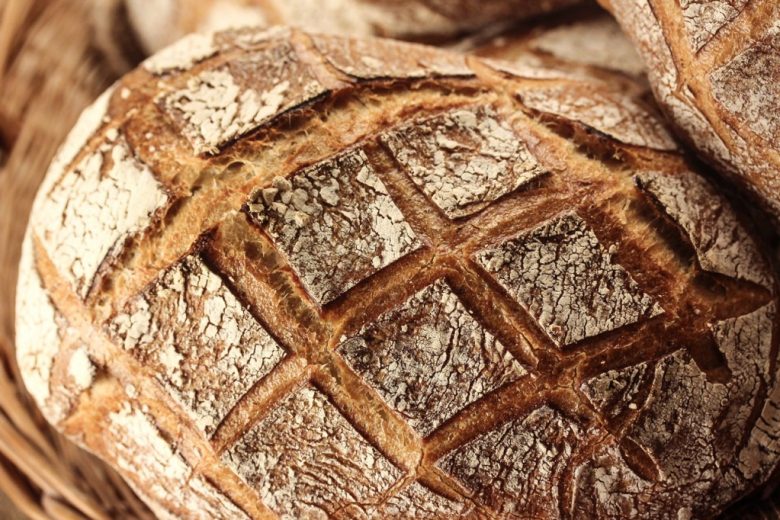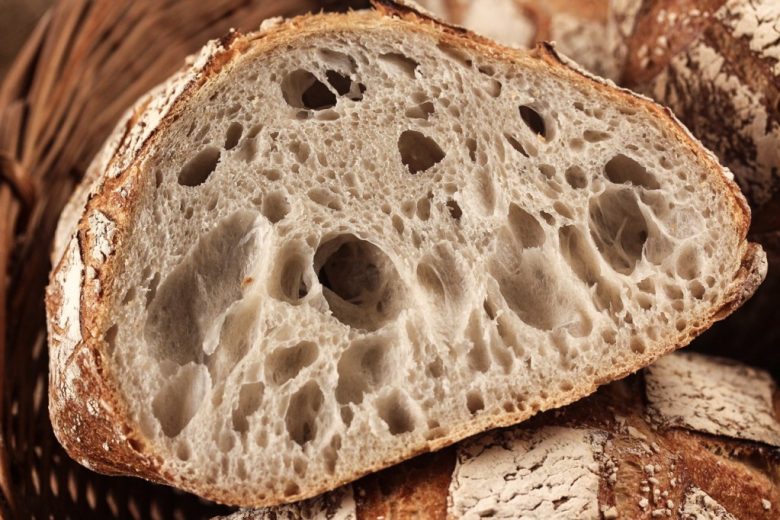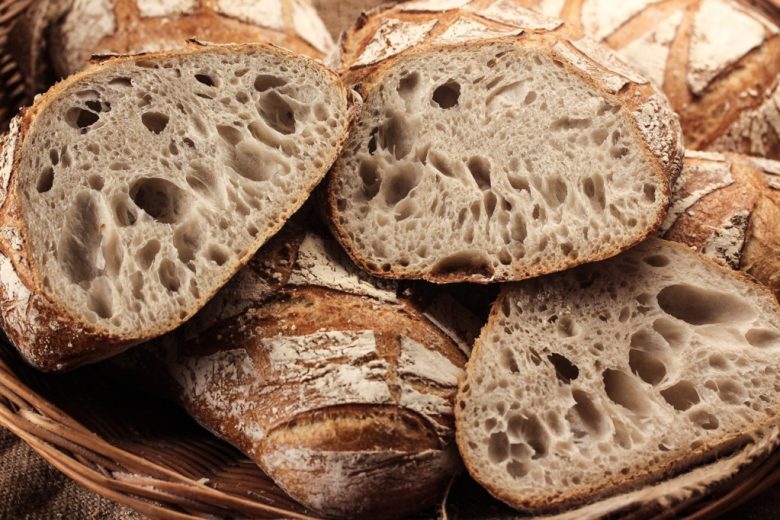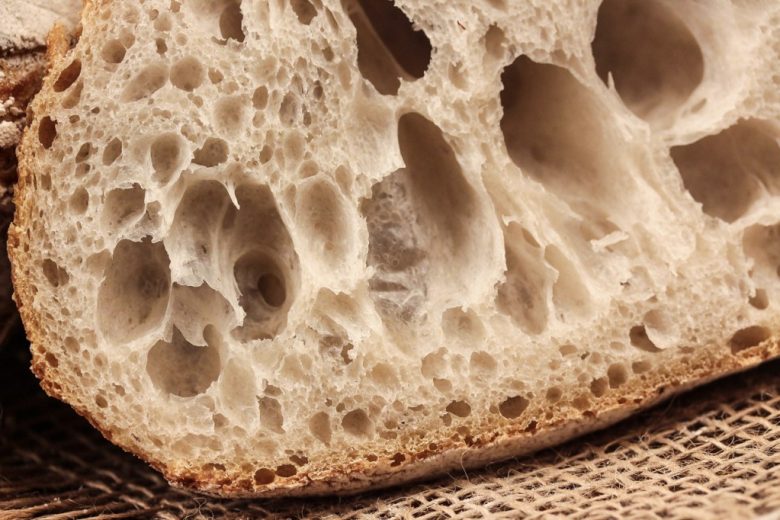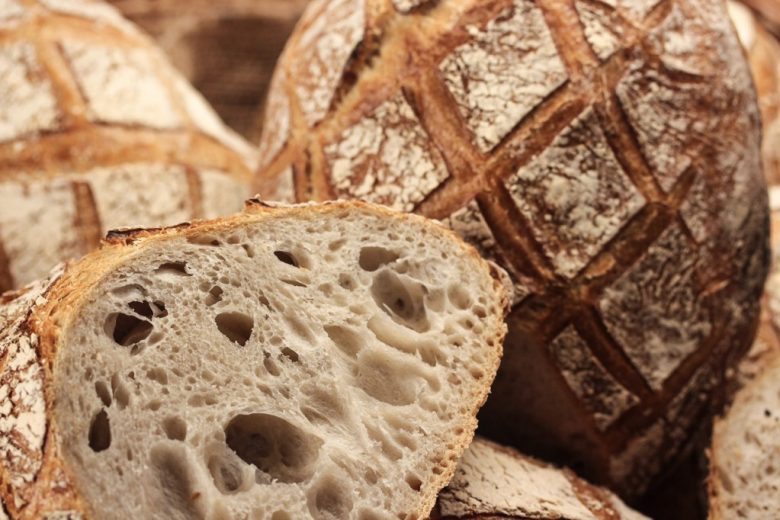Pane Bianco
Many readers have problems determining the length of the final proof, so you should know the following: The final proof is the rise time of the formed dough pieces until they are put into the oven. During this time, the dough pieces should reach the optimal proof (oven ready).
During the final proof the following occurs:
- Leavening by the yeast and/or sourdough
- Enzymatic degradation of gluten and starch
The leavening takes place mainly through the fermentation of the yeast (CO2) or through the heterofermentative lactobacilli in the sourdough (also in the wheat sourdough). Under the gas pressure, the existing pores expand to two to three times their size. This makes the pore walls thinner.
The enzymatic breakdown of the wheat gluten by proteinases leads to the softening of the gluten. This allows the pores to expand more easily. Amylases break down the starch into malt sugar and dextrins. Malt sugar serves the yeast as nourishment and thus promotes the formation of motive gas. The by-products of fermentation contribute to the aroma and taste of the baked goods.
Fermentation stability:
This is understood to mean the gas retention capacity of doughs in relation to gas development. The fermentation stability of wheat dough depends on the gas retention capacity of the gluten. In the case of short doughs (firm doughs), the adhesive membrane tears, the propellant gases escape and the volume is lost.
Fermentation tolerance:
The fermentation tolerance describes the insensitivity of the ripe dough pieces to exceeding the optimal fermentation maturity. This is the period in which the ripe, fully proofed dough pieces can withstand the increasing gas pressure.
The fermentation tolerance has been exceeded when the gluten tears due to the pressure of the fermentation gases and the dough pieces go flat.
Duration of the final proof:
Depends on the following factors:
- Type of dough: Wheat doughs always ferment longer than rye dough
- Ingredients: High amounts of yeast and high dough temperatures shorten the proofing time. Dough rich in fat or firm doughs will lengthen the cooking time.
- Size of the dough pieces: Large dough pieces require a longer dough maturation
Determination of full proofing:
The proofing state can be determined by the appearance (visual) of the dough shape or by touching (sensory) the dough pieces with the fingers. The decision about the oven readiness requires a lot of experience. Whether a dough is sufficiently leavened and can be solidified by the baking process is not only determined by the stretch resistance of the surface of the dough, but also by the behavior of the pressure point.
The behavior of a small dimple made in the bread with three fingers either will spring back fully, remain indented, or slowly refill. In the last case the correct time has been reached to put the bread in the oven. The first case is too soon and the second case the optimum time has already passed.
As a corrective measure, the oven program can be adjusted to the level of deviation from the optimum level of proofing. If found to be over proofed, the oven temperature should be 10-20°C above normal, as these doughs only “pull up” through intense heat, i.e. do not flatten and quickly form a stable crust. In the other case, with a so-called scarce proof, the temperature adjustment must be slower, so a slightly colder oven and a higher (more) volume of steam can compensate for the scarce proofed doughs.
Summarized:
Scarce proof:
- Stronger resistance
- Dimple vanishes quickly
Full proof:
- Lower resistance
- Dimple vanishes slowly or
- Dimple remains visible
Use of the different proofing states:
Scarce proof:
- Covered, coated or scored bread and pastries
- Shaped rolls (Salzstangerl, Handkaiser, …)
- Cool ovens (ovens that only reach 240 ° C for various reasons)
- heavy and high-fat doughs
Two-thirds proof:
- Breads that come off the baking peel
- Standardized pastries with built up layers (puff pastry)
- Fried pastries (donuts)
Full proof:
- Bread in a baking pan
- Rolls made with high gluten flour( French T65 / T80, Italian Tipo 0 / 00)
- Breads with a smooth surface
- Bread and rolls that are spritzed before baking
Baking errors from overshooting the proof:
- Smaller volume
- Coarse / irregular pores
- Flat shape
- Stodgy
Causes:
- The gluten matrix is blown up by too much fermentation gases – this overstretched the gluten.
- The dough pieces can no longer withstand the strong expansion of the fermentation gases during the oven spring. The pore walls tear and the pores collapse.
Recipe
For 3 pieces of “Pane Bianco”, each 560g / total dough weight: 1680g
Poolish:
- 125g Tipo 00
- 125g Water (15C°)
- 1g Yeast
Hydration(TA): 200 Maturity time: 18-48 hours at 4°C DT: 22°C reduced to 4°C
Wheat sourdough:
- 120g Wheat flour Type 1600 or T80
- 70g Water (35C°)
- 10g Starter
Hydration(TA): 158 DT: 30°C reduced to room temperature Maturity time: 18-30 hours
Main dough:
- 251g Mature poolish
- 200g Maure wheat sourdough
- 700g Tipo 00
- 510g Water (15°C)
- 18g Salt
- 5g Yeast
- Mix all ingredients except for yeast and salt for 2 minutes and let stand to autolyze for 30 minutes.
- Then add the salt and yeast and mix slowly for 8 minutes and knead on fast for 304 minutes.
- After kneading, store the dough in an oiled tub.
- Fold the dough after 40/80 minutes.
- After a total dough maturity time of 120 minutes, the dough is divided into 3 equal-sized pieces.
- Now fold all of the sides into the middle and place in a well floured proofing basket to proof (mine proofed for 8 hours at 5°C in the refrigerator). If the cold proof is prolonged to 12-15 hours, the dough maturity time must be shortened to 90 minutes (fold after 30/60 minutes).
- Preheat the oven to 250°C, turn the dough out onto the bread peel directly from the oven, score, and slide into an oven full of steam
- After 15 minutes, reduce the oven to 220°C and bake until well browned. In order to get a stronger crust, the steam can be let out toward the end of the baking time by opening the oven door briefly. (total baking time of about 35 minutes)


